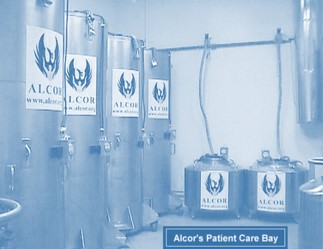More on Zombie Stem Cells
A while back I blogged about the fact that living stem cells could be isolated from fresh cadavers up to 2+ weeks old. This is a bizarre thing and testament to how, even in a limited nutrient and oxygen environment, these hearty cells keep going. In fact, it may be because many stem cells live in already harsh environments in the body (often with little oxygen), so that makes them able to keep living after the host is dead. Now a paper just published extends that zombie stem cell limit to 5 years! In this case arteries were harvested for a tissue bank within 12 hours to 4 days after death and then stored through cryo-preservation (deep freeze) for 5 years. The mesenchymal stem cells (MSCs) were then recovered, isolated, and culture expanded to bigger numbers. They demonstrated all of the properties you would expect from MSCs. What’s amazing is not only that MSCs were still alive in the artery walls of these dead patients for up to 4 days, but that a sub-population of them was hearty enough to survive the freezing process as a whole organ (i.e. artery) rather than as a single cell. Preserving whole organs is hard, as they tend to form disruptive ice crystals that can shred living cells, whereas preserving single cells is easy, as you can more thoroughly permeate them with cryo protectant so that this doesn’t happen. This discovery will likely give hope to the families of those hearty souls stored at Alcor and other such facilities who had their bodies cryo-preserved within minutes to hours after death. Even if their broken body as a whole can never been recovered (due to ice crystals), as long as they’re stored diligently, they may well have recoverable cells that can be easily isolated, grown, and cloned into a whole person in some more advanced future.
The upshot? Zombie stem cells? This stuff is really weird in that it turns on its head the meaning of death. Is death when your heart stops, brain stops, or when all the cells in your body die? As we’re more able to resuscitate first the recently dead and next the very dead (through recovering some of their living cells and then advanced cloning), we’re going to have to rejigger our definitions a bit. In addition, I smell a hell of a Hollywood script in the making…

If you have questions or comments about this blog post, please email us at [email protected]
NOTE: This blog post provides general information to help the reader better understand regenerative medicine, musculoskeletal health, and related subjects. All content provided in this blog, website, or any linked materials, including text, graphics, images, patient profiles, outcomes, and information, are not intended and should not be considered or used as a substitute for medical advice, diagnosis, or treatment. Please always consult with a professional and certified healthcare provider to discuss if a treatment is right for you.

